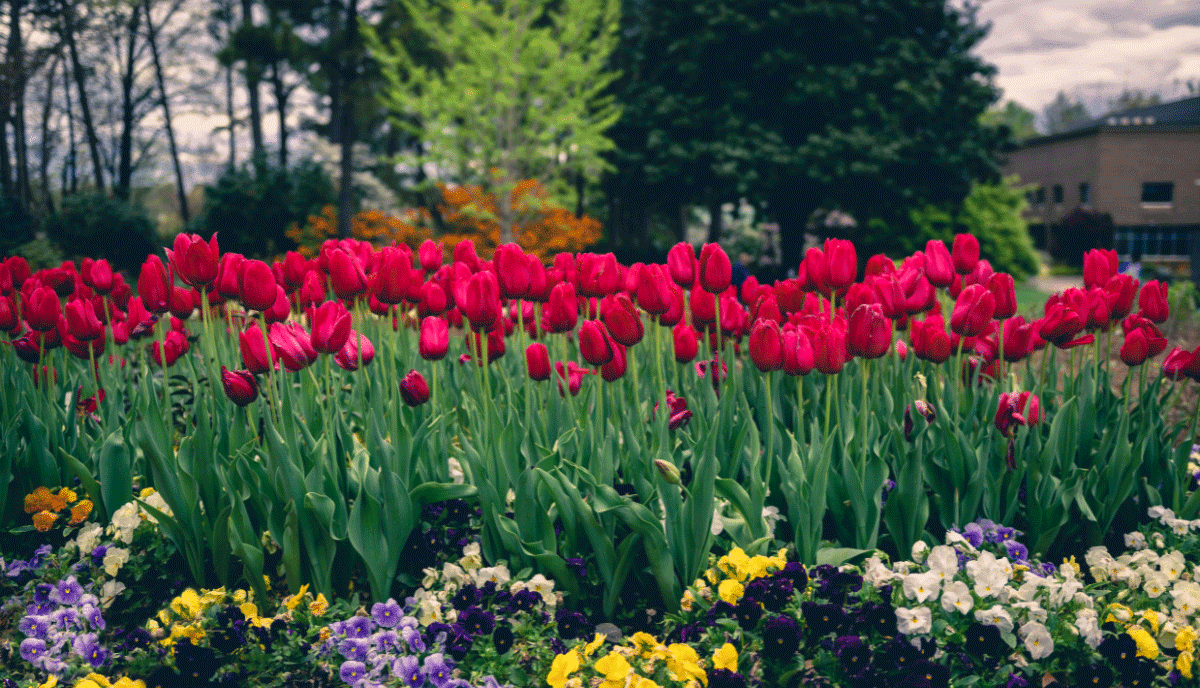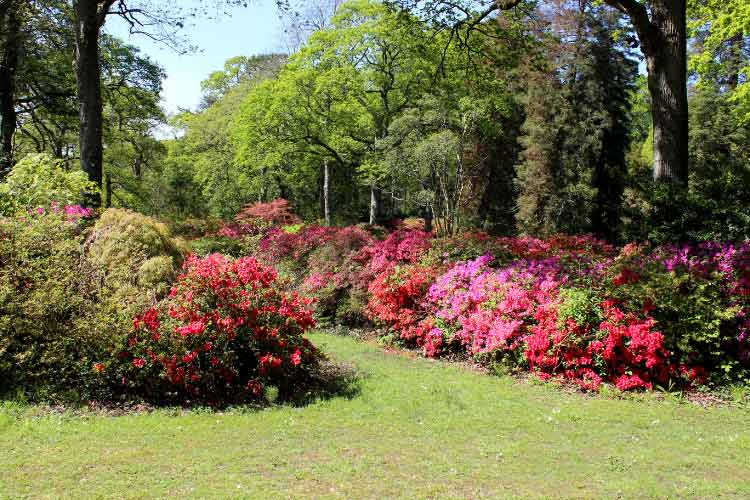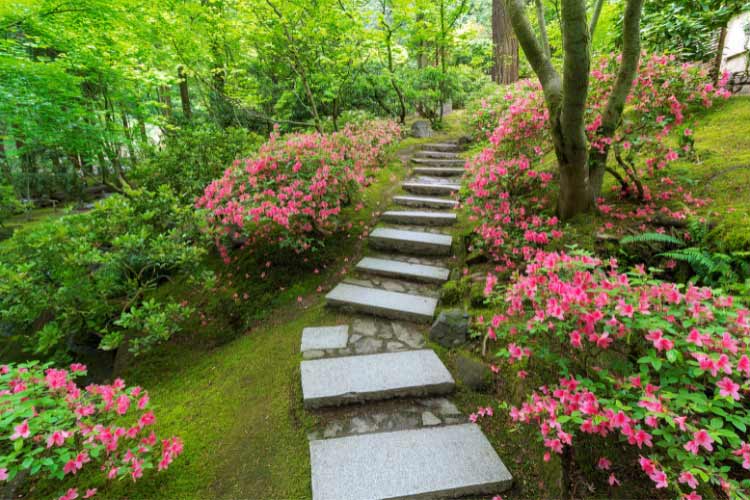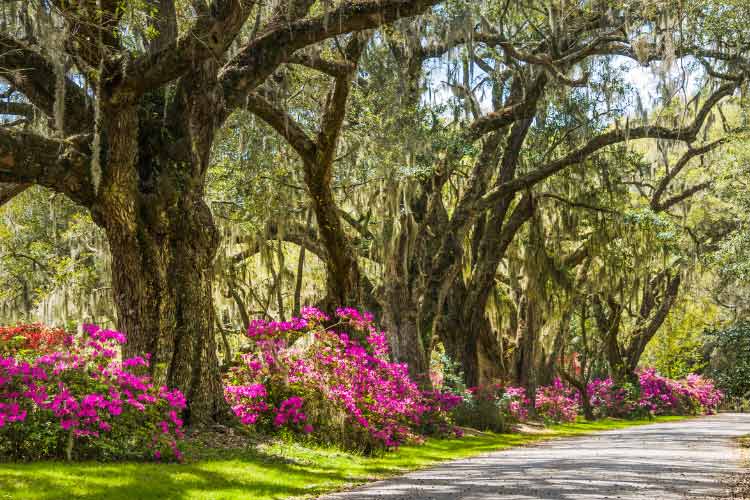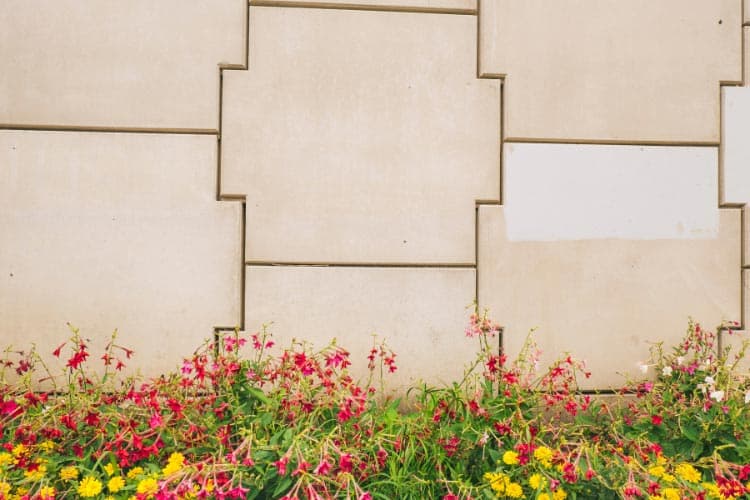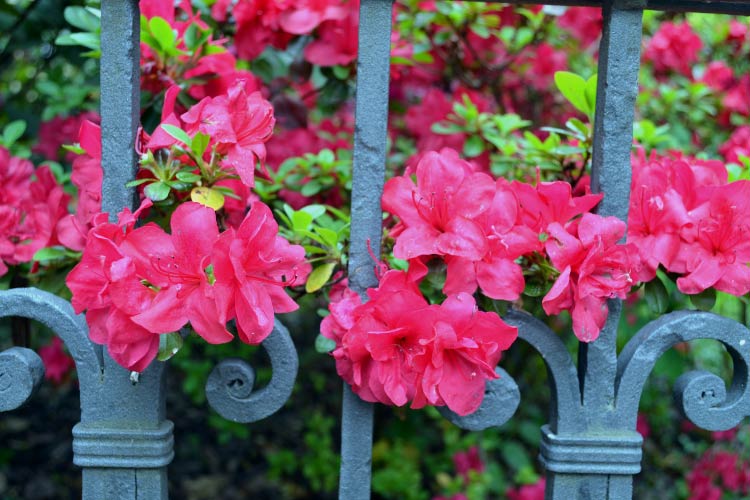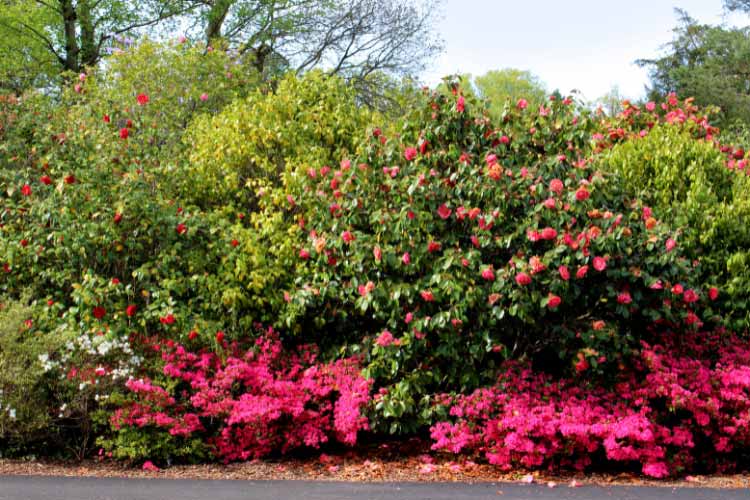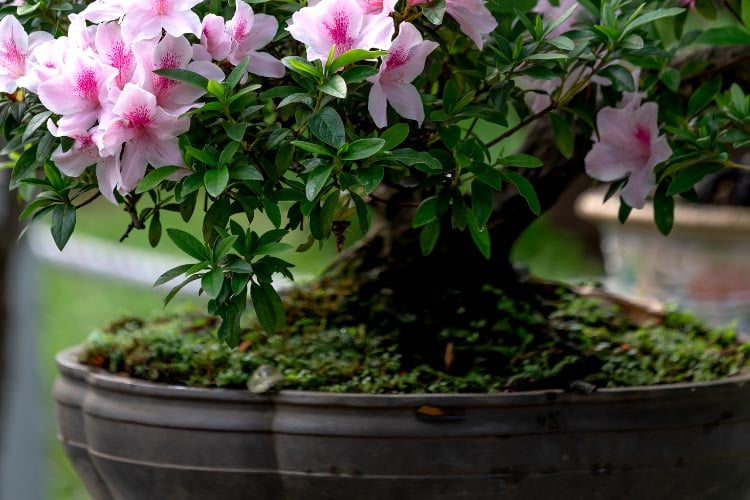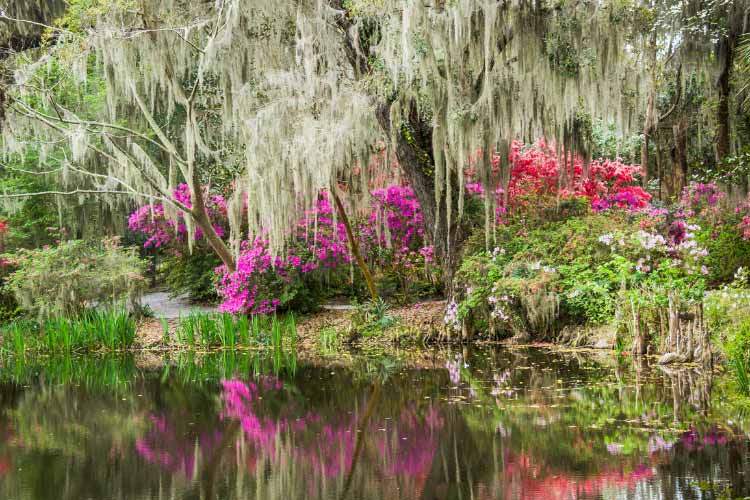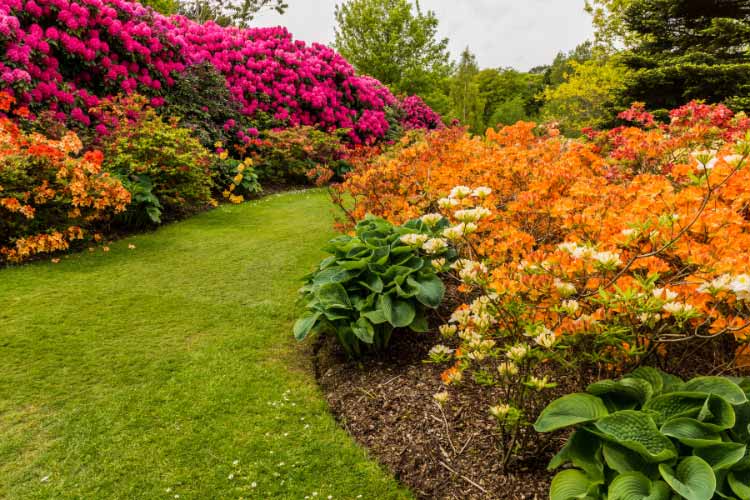Azaleas are the pops of color that your garden is looking for during spring. They transform a yard into a breathtaking showcase of pink, red, purple, and white blooms with a rich green backdrop. You can grow them as hedges, in containers, or as accents, and they’re great at adapting to different environments. If you put some thought into their placement, azaleas will reward you with structure and texture, while only needing partial shade, well-drained soil, and consistent watering.
Here are some azalea landscaping ideas for a burst of color that can help you style these flowering shrubs to fit your vision, whether it’s a bold focal point or a subtle border:
1. Azaleas as Hedges
Azaleas are more effective at creating a vibrant seasonal display than plain green shrubs, especially when they bloom in spring. Plant them in a straight line if you want a formal appearance or in staggered rows for a flowing effect. The best azaleas for year-round greenery would be evergreen varieties and mulch will help retain moisture and keep roots cool. Use them as hedges to define your property boundary, to outline sections of your garden, or to frame your home’s facade.
2. Azaleas Near Walkways
Walkways come in many forms, from backyard trails to winding garden paths, but they can all do with the charm of azaleas. The key to all azalea landscaping ideas for a burst of color is to design your space thoughtfully so it isn’t overwhelming.
Choose low-growing varieties that won’t obstruct the view and make the pathways feel too busy and plant them in alternating colors for a cheerful effect. If you want to enhance look even further, complement the stone pathways and azalea borders with ground covers or small perennials like hostas or creeping phlox.
3. Azaleas Under Trees
Azaleas prefer dappled sunlight, so they do better under tree canopies than they do in full sun. Deciduous trees are especially effective at meeting the needs of azaleas because they provide filtered light in spring and early summer and more shade later in the season as the canopy thickens.
Azaleas add life to the bare areas under trees, softening the base and creating a woodland-inspired garden. Pair them with ferns, hostas, or groundcovers that thrive in similar conditions and don’t plant them too close to the tree roots because they’ll compete for water. For the best results, create a mulch bed under the tree to retain moisture and enrich the soil.
4. Azaleas Along Stone Walls
By planting azaleas along your stone walls, you’ll enhance the beauty of the architectural structure. The rugged texture contrasts beautifully with the delicate blooms of the azaleas, but a pairing of polished retaining walls with azaleas works just as well.
Tall varieties create a dramatic backdrop and compact ones soften the base of lower walls, while anchoring it into the landscape. If your yard is sloped and the stone walls serve a specific terraced purpose, plant the azaleas at different levels and pair them with ivy, creeping groundcovers, or ornamental grasses.
5. Fences Lined With Azaleas
There’s a reason why many azalea landscaping ideas for a burst of color are about placement. It’s because the overall look of your azaleas depends on where you plant them. Fences and boundaries can feel harsh, whether they’re made from metal, wood, or vinyl, because in the end they’re more structural than decorative.
But you can transform your property’s boundary into a living feature by lining your fencing with azaleas that’ll add a seasonal show of blooms as well as extra privacy. Choose a mix of colorful azalea varieties and space them so each plant has enough room to grow. For easy maintenance, go for a mulch bed and install a drip irrigation system to do the work for you.
6. Curved Azalea Beds
There’s something about a curved azalea bed that adds elegance and flow to a garden. It breaks up the rigid lines of a foundation, driveway, or fences for a seamless, organic landscape. There’s nothing wrong with straight plantings, but curved beds introduce movement to make your garden feel more inviting.
Define the curves and add structure with brick, stone or metal edging and put some thought into your azalea arrangements. Use the taller varieties at the back, while smaller varieties near the edges will help create a tiered effect. For added interest and even more layers of texture, mix them with hydrangeas, ornamental grasses, or hostas.
7. Azaleas in Front of Taller Shrubs
Azaleas work well on their own, but many azalea landscaping ideas for a burst of color incorporate other plants to let them shine. Instead of blending into the environment, you want your azaleas to be a focal point, so plant them in front of a boxwood, holly, or arborvitae backdrop. It’s a double win because your azaleas will stand out, but they’ll also soften the base of the larger shrubs to create a smooth, intentional landscape.
The deep green of the taller plants and the flowering azaleas work well together while framing the foundation of your home or serving as a border around your garden. Go for azalea varieties that won’t outgrow the space or overshadow the shrubs, and group them together for a fuller display.
8. Large Containers With Azaleas
Sometimes in-ground planting simply isn’t possible. Perhaps you’re working with a concrete jungle or renting and moving somewhere in the future. Or maybe your options include nothing but a balcony, deck, or small courtyard. That’s when large containers come in handy. Plant your azaleas in decorative pots made of stone, ceramic, or metal and pair them with trailing plants like ivy or creeping Jenny.
Place them in your entryways or yard, or on your patio, deck, porch, or balcony to brighten the area. Whether you group them in clusters or plant them individually, it’s important to ensure that your azaleas get proper watering, fertilization, and well-draining soil.
9. Azaleas Near Water Features
Did you know that you can double the visual impact of azaleas? If you add water to the scene, the vivid blooms will reflect beautifully in the water. Combine this with the sound of the water moving and you’ll have an attractive, calming sensory experience. The lush foliage of the azaleas softens the edges of pond borders or stone fountains, so it’s the perfect opportunity to blend hardscaping with natural beauty.
Mix different colors around the water feature to create a vibrant look that’ll change with the seasons, or add some companion plants like ferns, ornamental grasses, and moss. The key is to ensure that your azaleas get proper drainage because they don’t like soggy soil.
10. Azaleas Mixed With Other Plants
Mixed plantings attract pollinators to boost diversity in your garden, while providing contrast for a picturesque landscape throughout the year. Plant azaleas alongside evergreen shrubs for structure and greenery during the off-season, or pair them with flowering perennials to extend the bloom period.
Fill in the bare spaces with groundcovers like vinca or creeping phlox and pair the azaleas with hostas, rhododendrons, hydrangeas, and ferns. A good example of complementary pairings is pink azaleas with blue hydrangeas. The same goes for the incredible contrast of white azaleas mixed with deep green ferns.

Jamie is the founder of The Backyard Pros. When he was 15 years old he started working at a garden centre helping people buy plants, gardening products, and lawn care products. He has real estate experience and he is a home owner. Jamie loves backyard projects, refinishing furniture, and enjoys sharing his knowledge online.

